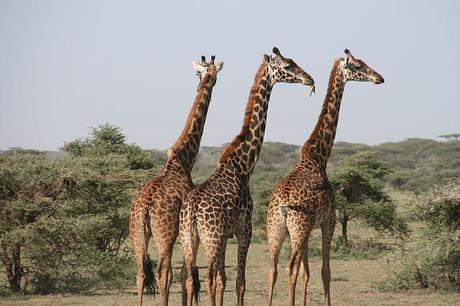The dramatic drop in Giraffe’s population in recent decades forced the US to consider the matter seriously and to give new protection to Giraffes, CNN reported.
Last week the US Fish and Wildlife Service announced that it would conduct an in-depth review on whether the species would be incorporated in the endangered and threatened wildlife list under the Endangered Species Act.

A coalition of conservation groups filed a petition to protect giraffes in April 2017. It says the animals are “in danger of extinction throughout all or a significant portion of its range.”
“With fewer giraffes left in Africa than elephants, it is imperative that we turn our attention to these unique animals before it is too late,” the petition said.
There are threats like habitat loss, drought, hunting including both legal sport hunting and poaching and diseases for giraffes, says petition.
Giraffes got listed as “vulnerable” in the 2016 “Red List” of endangered species of The International Union for Conservation of Nature that said the giraffes’ populations decreased by up to 40% over the last 30 years.
According to the group, the number of giraffes in sub-Saharan Africa plunged from 163,000 in 1985 to an estimated 97,560 in 2015.
The initial review continued for two years though it was supposed to take 90 days. In December Conservation groups filed a lawsuit over the delay.
As a spokeswoman for the Fish and Wildlife Service said, the lawsuit did not have any effect on the timing of the decision.
Until December 31, 2020, public comments on the scientific and commercial impact will be taken into consideration by the service.
“The service uses the best available science to make listing decisions and the review will not be issued until after the comment period closes,” she said.
The US Fish and Wildlife Service will impose restrictions on the taking, possessing, selling or transporting of giraffes or their parts in case they are listed as endangered or threatened.
“One of the goals for the Endangered Species Act, if something is threatened with extinction, we want to cut off market demand for that species,” said Tanya Sanerib, the international legal director at the Center for Biological Diversity, who helped write the petition.
According to government data cited in the petition, 3,744 giraffe trophies imported between 2006 and 2015 by the US. During that time, almost 40,000 giraffe specimens got imported including 21,400 bone carvings, 4,789 bones, 3,008 skin pieces, 1,903 bone pieces, 855 skins & leather goods, jewelry, and other products.
Giraffe bones are popular for carving, knife handles, and other decorative uses, Sanerib said.
“There’s a big concern that it’s becoming the new ivory,” she said.
Demand for meat is also the reason behind poaching in Africa.
“Giraffes are being coveted for meat. I mean obviously it’s a huge animal, if you kill a giraffe you get a lot of meat. And there’s a cross-border, trans-boundary trade in giraffe meat happening in Africa,” she said
As per Safari Club International, which promotes the freedom to hunt and also wildlife conservation, many countries depend on the earnings from hunters for funding their conservation efforts.
“Without offering anything in return, an ESA (Endangered Species Act) listing could reduce the revenues and incentives currently being generated by hunting. That means reduced habitat protection, less funding for anti-poaching and fewer benefits for the rural people who live side-by-side with giraffes and other wildlife,” the group said. “SCI opposes the proposed listing because it is a bad bargain for the giraffe.”
The National Rifle Association Hunters’ Leadership Forum has also opposed the listing.

